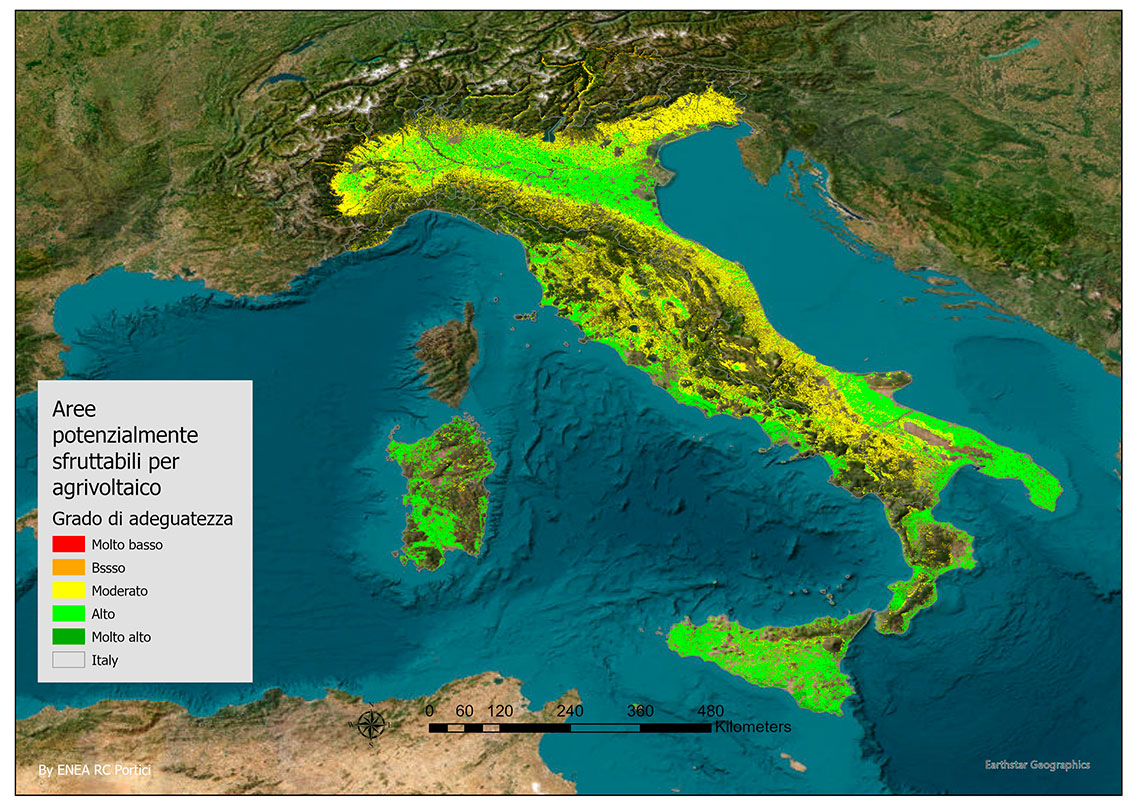From pv magazine Italy
Enea has designed a map documenting Italy's potential for agrivoltaics deployment.
“The map is now being validated and it will be accessible online in the future,” the agency said, noting that it is mainly designed to help to identify potential sites for agrivoltaics development.
The Enea Research Center in Portici, near Naples, developed the map with the support of the AgrivoltaicoSostenibile@ENEA task force and AIAS, the Italian Sustainable Agrivoltaic Association chaired by Enea itself. The map is based on indicators related to qualitative and quantitative characteristics of the Italian landscape.
“The potential of agrivoltaics in the national context is usually assessed on the basis of the topographical characteristics and the extension of the available agricultural areas,” said Enea researcher Grazia Fattoruso. “The methodology developed in our Geomatics laboratory considers both the various factors that can influence the solar photovoltaic potential of a given area, such as geophysical, technical and environmental factors, and the factors that can influence the agricultural yield, such as the different types of soil, land use capacity, and water scarcity.”
Popular content
Six different working groups in Italy are actively supporting the bodies responsible for implementing agrivoltaics. These groups focus on sustainable certification, legislation and implementation, training, agriculture technologies, and landscape considerations.
“It is essential to underline how training is crucial for the entire agricultural system, which in recent years has been affected by changes that require innovation,” Enea said. “In this context, sustainable agrivoltaics act as an ‘aggregator' capable of putting innovations into a system starting from the needs expressed by the operators involved.”
In April, the Italian government launched a new incentive scheme to support innovative agrivoltaic solutions. The program is part of the country's National Recovery and Resilience Plan (PNRR) and has a budget of €1.1 billion ($1.2 billion), which should be enough to deploy around 1.04 GW of PV capacity by June 2026.
This content is protected by copyright and may not be reused. If you want to cooperate with us and would like to reuse some of our content, please contact: editors@pv-magazine.com.


By submitting this form you agree to pv magazine using your data for the purposes of publishing your comment.
Your personal data will only be disclosed or otherwise transmitted to third parties for the purposes of spam filtering or if this is necessary for technical maintenance of the website. Any other transfer to third parties will not take place unless this is justified on the basis of applicable data protection regulations or if pv magazine is legally obliged to do so.
You may revoke this consent at any time with effect for the future, in which case your personal data will be deleted immediately. Otherwise, your data will be deleted if pv magazine has processed your request or the purpose of data storage is fulfilled.
Further information on data privacy can be found in our Data Protection Policy.